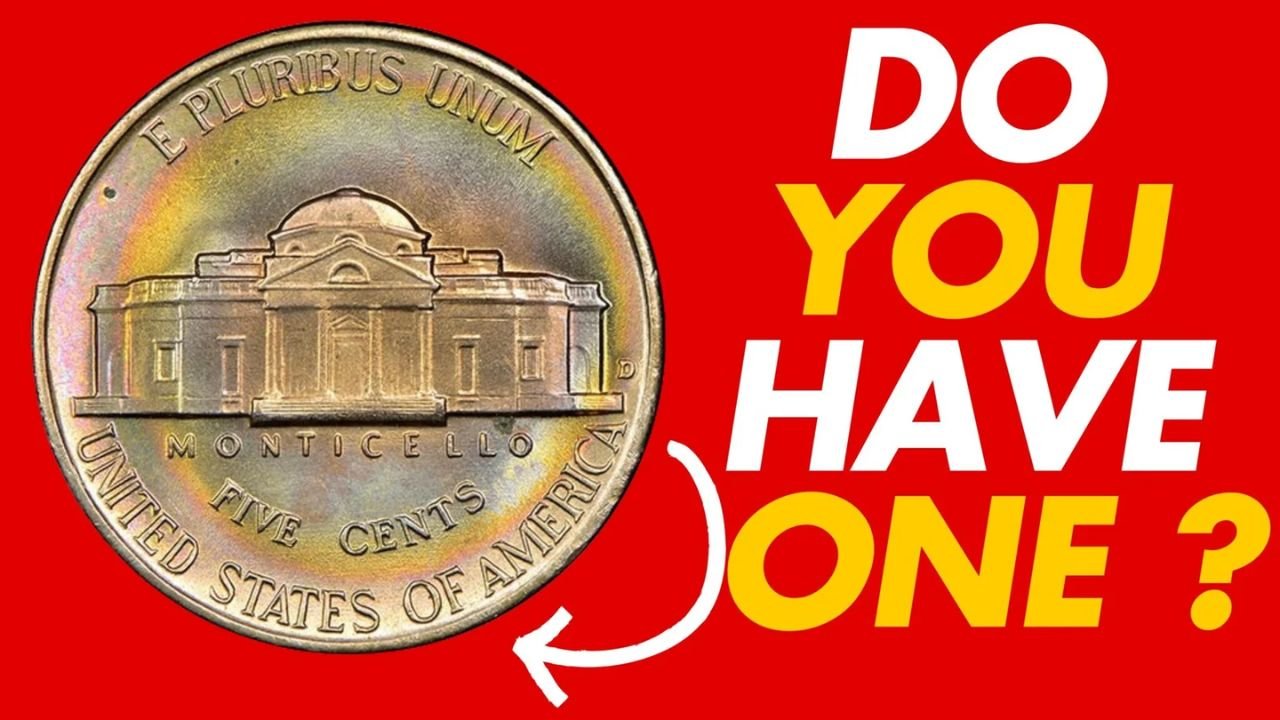In the vast world of numismatics, few coins blend historical depth, collector appeal, and accessibility like the War-Era Jefferson Nickel. Struck during one of the most defining periods in American history—World War II—this seemingly modest five-cent coin represents far more than its face value. It’s a symbol of national resilience, industrial adaptation, and a physical relic of a time when every American played a role in the war effort, even through their pocket change.
From its silver-infused alloy to rare minting errors, the War-Era Jefferson Nickel—especially the notable 1943-P issue—has captivated collectors and historians alike. This article dives deep into the significance, value, and enduring legacy of this iconic coin, focusing on what makes it a prized collectible for both seasoned numismatists and new enthusiasts.
A Coin Born from Wartime Necessity
The origin of the War-Era Jefferson Nickel is rooted in urgency. As the United States entered World War II, key metals such as nickel became crucial for military applications—used in the production of armor plating, artillery, and various war supplies. This sudden and massive demand for nickel prompted the U.S. Mint to act swiftly.
In 1942, the U.S. Mint altered the composition of the Jefferson nickel, replacing its traditional 75% copper and 25% nickel alloy with a wartime mix consisting of 35% silver, 56% copper, and 9% manganese. This change wasn’t just about saving nickel—it was also designed to ensure the coins could still be used in vending machines and cash transactions without disruption.
Thus, the Silver War Nickels were born—minted from mid-1942 through 1945, and uniquely distinguishable by a large mint mark above Monticello on the reverse side. For the first time in history, even coins minted in Philadelphia (typically mark-free) carried a bold “P” mint mark.
The 1943-P Jefferson Nickel: A Collector’s Gem
Among all War-Era Jefferson Nickels, the 1943-P Jefferson Nickel stands out as particularly significant. While millions were minted, a rare error version—known as the 1943-P 3 Over 2 overdate—has become one of the most sought-after coins in American numismatics.
This overdate error happened when a die originally made for 1942 was mistakenly re-engraved with a 1943 date. The result is visible doubling in the date, where the number “3” is imprinted over the original “2.” For collectors, this type of minting anomaly is a golden opportunity. Combine that with the “Full Steps” grading (indicating pristine detail in the Monticello staircase), and you’ve got a coin that fetches upwards of $10,000 at auction in top condition.
It’s not just rarity that makes this coin valuable—it’s the combination of error, historic relevance, and preserved craftsmanship.
More Than Just Silver: What Truly Adds Value
Yes, the War-Era Jefferson Nickel contains 0.056 ounces of silver, giving it intrinsic metal value. But its collector appeal goes far beyond silver content. Here’s why:
- Historical Significance: Each coin is a physical piece of WWII-era America. It’s more than a monetary instrument; it’s a wartime artifact.
- Unique Composition: The unusual silver-manganese-copper alloy was exclusive to this period and never used again in American coinage.
- Bold Mint Marks: The large “P,” “D,” or “S” above Monticello makes these nickels instantly recognizable.
- Minting Variations & Errors: From overdates to die cracks and “Full Steps,” these minting quirks add layers of collectability.
- Wide Availability: Unlike rarer coins that remain out of reach for most collectors, War Nickels are still found in rolls, estate sales, and personal coin jars.
A Collector’s Accessible Historical Treasure
One of the most compelling aspects of the War-Era Jefferson Nickel is how accessible it remains. You don’t need to be a millionaire or own a private vault to enjoy the satisfaction of collecting these coins. Many people find them in old family coin boxes, inherit them from relatives, or buy them inexpensively online and at coin shows.
This accessibility democratizes collecting. It allows newcomers to enter the numismatic world through a coin that carries rich historical meaning yet remains within budget. For this reason, the War-Era Jefferson Nickel continues to be a popular starting point for young collectors, history buffs, and silver stackers alike.
Why This Coin Still Matters in 2025
In an era of digital payments and crypto currencies, the continued fascination with a five-cent coin minted over 80 years ago speaks volumes. The War-Era Jefferson Nickel is more than a nostalgic collectible—it is a time capsule.
It teaches us:
- How war reshapes economies: The change in alloy composition was a direct result of resource reallocation.
- How mints adapted under pressure: The appearance of mint marks on Philadelphia coins was unprecedented.
- How ordinary objects become extraordinary through context: A coin used for buying chewing gum in 1943 may now be worth thousands.
Collectors often remark how handling these coins brings them closer to the past. There’s something grounding and profound in touching a piece of metal that circulated during the days of D-Day, Rosie the Riveter, and wartime rationing.
Investment Potential and Market Trends
While not every War-Era Jefferson Nickel will command five-figure auction prices, many still hold significant numismatic and investment value—especially in mint condition, certified by grading services like PCGS or NGC.
- Error coins and overdates: These remain in high demand, with prices climbing steadily over the past decade.
- Full Steps examples: These are evaluated on strike quality and detail, adding substantial value.
- Uncirculated and proof-like specimens: These fetch premium prices from collectors and investors.
Market analysts predict continued appreciation of these coins as interest in historical U.S. coinage grows, especially among millennials and Gen Z collectors discovering numismatics online.
Frequently Asked Questions (FAQs)
Q1: What is a War-Era Jefferson Nickel?
A War-Era Jefferson Nickel refers to the U.S. five-cent coins minted between 1942 and 1945 using a unique wartime alloy of 35% silver, 56% copper, and 9% manganese. These coins were produced to conserve nickel for World War II military needs.
Also Read : $760 Cost-of-Living Payment May 2025: Government Support for Expenses Is Coming
Q2: What makes the 1943-P Jefferson Nickel so valuable?
The 1943-P nickel becomes especially valuable when it features the 3 Over 2 overdate error—a rare minting mistake where a 1943 date was stamped over a 1942 die. Combined with pristine grading (like Full Steps), such coins can sell for over $10,000.
Q3: Why were these nickels made with silver?
Nickel was critical to wartime manufacturing, particularly for military armor and weapons. To conserve this metal, the U.S. Mint shifted to a silver-based alloy for the duration of the war.
Q4: Are War-Era Jefferson Nickels still in circulation?
While extremely rare in everyday change today, some War Nickels occasionally surface in circulation or in forgotten family collections. Most are found through estate sales, coin shops, or online markets.
Q5: How can I tell if I have a War-Era Jefferson Nickel?
Look for a large mint mark (“P,” “D,” or “S”) above Monticello on the reverse. This unique placement is specific to the wartime issues from 1942 to 1945.
Final Thoughts: Holding History in Your Hands
The War-Era Jefferson Nickel is more than just a coin. It’s a chapter of American history minted in silver and struck with purpose. It symbolizes how the nation adapted, innovated, and sacrificed during a time of global turmoil.
Whether you’re a seasoned coin collector, a World War II enthusiast, or someone who stumbled upon one in a forgotten drawer, this coin offers a direct link to the past. Its value isn’t just measured in dollars or ounces of silver—but in stories, resilience, and remembrance.
In a modern world filled with fast-paced technology and digital currency, coins like the 1943-P War-Era Jefferson Nickel remind us of where we’ve been—and how much history we can still hold in the palm of our hands.
Some Important Link
| Telegram Group | Click Here |
| WhatsApp Group | Click Here |
| Home Page | Click Here |










